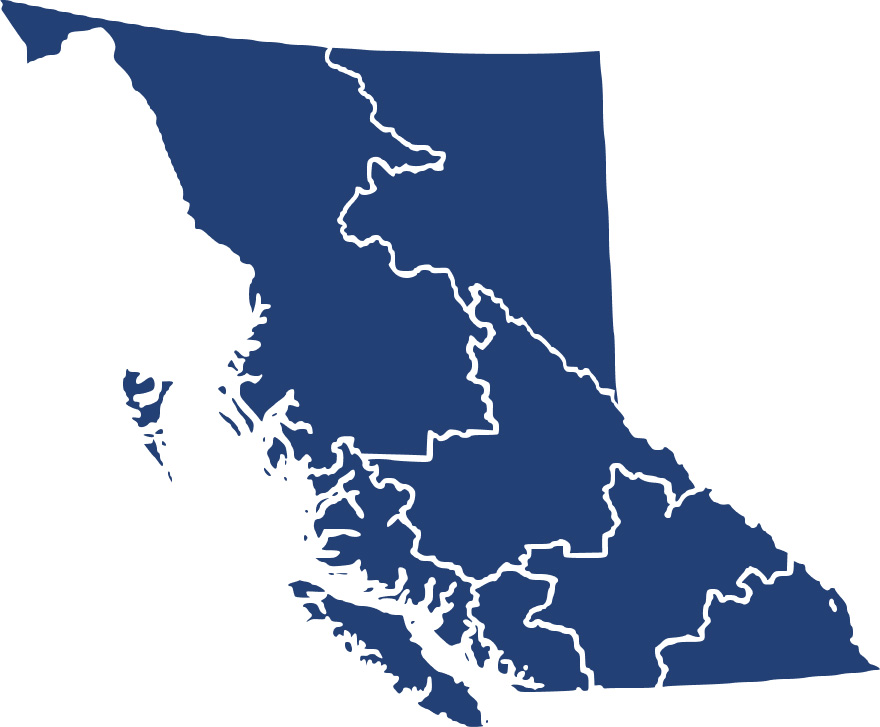Career Overview
People in these occupations:
- Work for construction companies, painting contractors and building maintenance contractors
- May be self-employed
- Should be accurate and detail-oriented
- Are usually creative with a good understanding of colour and proportion
- Should be comfortable working at heights
Duties
Painters and decorators:
- Read specifications to determine the quantities of materials required
- Prepare and clean surfaces using methods such as scraping, sanding, sandblasting, hydro-blasting and steam-cleaning
- Remove old wallpaper and loose paint
- Repair cracks and holes in walls
- Sandpaper and apply sealer
- Mix and thin paint to get desired colour and texture
- Apply paint or other materials, such as stains, lacquer, enamel, oil, varnish, fibreglass, metal coating or fire retardant using brushes, rollers or spray equipment
- Measure, cut and apply wallpaper or fabric to walls
- Assemble and erect scaffolding and swing stages
- Advise customers on selection of colour schemes and choice of wall coverings
- May provide cost estimates to clients
Earnings
Earnings is income that workers receive in exchange for their labour. Depending on the type of employment, earnings can be in the form of wages (hourly), salaries (fixed monthly or annual) or self-employed earnings.
Work Environment
# Workers Employed
7,815% Employed Full Time
33%Painters and decorators typically work a standard 40-hour week, with the majority working in the Construction industry. Since work is often project-based, these workers may experience gaps in between projects.
Painters and decorators often work at heights from ladders and scaffolding, and many of the materials used emit hazardous fumes or suspended particles. Safety procedures are followed and safety equipment is used to minimize risks.
Career Pathways
With additional training, painters and decorators are able to transfer their skills to related occupations such as automotive painting.
Experienced workers may advance to supervisory positions or start their own businesses.
Related Careers
Occupational Interests
It’s important to understand what kinds of occupations align with your interests.
For more about occupational interests visit Skills for the Future Workforce > Characteristics.
Here are the top occupational interest(s) for this career profile:
Job Titles
Education, Training and Skills
Completion of Grade 10 or equivalent (including English 10, Mathematics 10, Science 10) is the minimum education requirement; however, completion of secondary school is preferred. Other beneficial qualifications include:
- Completion of a three- to four-year apprenticeship program (or a combination of more than three years work experience in the trade and some college or industry courses) for certification by SkilledTradesBC
Certification is not mandatory in British Columbia, but it can offer more well-rounded training and will likely increase work opportunities. Painting and decorating apprenticeships:
- Can be started in secondary school, through entry-level training at colleges and technical institutes, or by direct entry to the workforce
- Require workers to find a sponsor employer who is willing to participate in the program
Painters and decorators are eligible for Interprovincial Standard Endorsement (Red Seal) qualification through SkilledTradesBC. This allows holders to work in any province or territory. Once individuals pass the final examination of their accredited training program, they will achieve certification and will automatically receive Red Seal qualification.
Workers with 8,100 hours of documented, directly related work experience can challenge the Interprovincial Red Seal examination. For more information, please see SkilledTradesBC's website at https://skilledtradesbc.ca.
Workers who are certified for an occupation by a regulator elsewhere in Canada can apply for the same certification from the regulator in B.C. Under the terms of the Canadian Free Trade Agreement (CFTA), most applicants who are transferring their credentials from elsewhere in Canada will not be required to complete additional training or testing. However, the B.C. regulator may ask applicants to provide further information such as a letter of good standing, references, or criminal record check.
For those who trained outside of Canada and never received certification from any Canadian jurisdiction, a full assessment is likely needed. Most occupational regulators have a process for assessment and recognize internationally trained applicants.
Contact SkilledTrades BC for details on how to apply for certification in B.C.
For information about labour mobility in Canada, visit www.workersmobility.ca.
View a list of Professional Regulatory Authorities in B.C.
Trades training resources
Visit our trades training page at www.workbc.ca/trades to learn about apprenticeship and trades training in B.C.
Education programs in B.C.

Skills
Every job calls for a certain set of skills. Knowing those skills is the first step in finding a good career fit.
Here, you will find the 10 most relevant workplace skills. Some are more important to achieving success in a certain career than others. These skills may come naturally to you or you may need to gain them through education, training and experience.
See the list of work-related skills below, ranked in order of importance for this career. Check out the list and see if this career matches your skills—take that first step!
Giving full attention to what other people are saying, taking time to understand the points being made, asking questions as appropriate, and not interrupting at inappropriate times.
Adjusting actions in relation to others' actions.
Using logic and reasoning to identify the strengths and weaknesses of alternative solutions, conclusions or approaches to problems.
Managing one’s own time and the time of others.
Keeping track of and assessing your performance, other individuals, or organizations to make improvements or take corrective action.
Considering the relative costs and benefits of potential actions to choose the most appropriate one.
Being aware of others’ reactions and understanding why they react as they do.
Talking to others to share information effectively.
Understanding written sentences and paragraphs in work-related documents.
Being able to solve novel, ill-defined problems in complex, real-world settings.
Labour Market Statistics
Discover data, facts and information that have been gathered and analyzed. Learn about the characteristics of the economy and labour market in B.C.
Employment
Find out about employment types and trends by region and industry.
Employment
7,815Employment by Region















| Region | Employment | % Employment of this Occupation |
|---|---|---|
| Cariboo | 140 | 1.8% |
| Kootenay | 165 | 2.1% |
| Mainland/Southwest | 4,910 | 62.8% |
| North Coast and Nechako | 35 | 0.4% |
| Northeast | 45 | 0.6% |
| Thompson-Okanagan | 1,045 | 13.4% |
| Vancouver Island/Coast | 1,475 | 18.9% |
Labour Market Outlook
The B.C. Labour Market Outlook is a 10-year forecast of the expected supply and demand for labour in the province. It’s usually updated every year. The purpose is to provide British Columbians with the knowledge to make informed decisions on careers, skills training, education and hiring.
Forecasted Job Openings (2023-2033)
2,230Forecasted Job Openings
Forecasted Employment Growth Rate
Composition of Job Openings
Job Openings by Region (2023-2033)















| Region | Job Openings | Avg. Annual Employment Growth |
|---|---|---|
| Cariboo | 20 | 0.6% |
| Kootenay | 40 | -0.4% |
| Mainland/Southwest | 1,270 | 0.5% |
| North Coast and Nechako | 0 | 0.2% |
| Northeast | 10 | 1.1% |
| Thompson-Okanagan | 480 | 1.4% |
| Vancouver Island/Coast | 420 | 0.6% |
Industry Highlights
Learn about the opportunities in B.C.'s major industries, including employment trends, earning potential, locations of work and more.
Forecasted Job Openings by Industry
| Industry | Job Openings (2023-2033) |
|---|---|
| Construction | 1,990 |
| Educational Services | 70 |
| Business, Building And Other Support Services | 30 |
| Retail Trade | 20 |
| Health Care And Social Assistance | 20 |
Resources
-
British Columbia Construction Association (BCCA)www.bccassn.com
-
BuildForce Canadawww.buildforce.ca/en
-
Canadian Decorators’ Association (CDECA)ddacanada.com/
-
Canadian Paint and Coatings Associationwww.canpaint.com
-
Finishing Trades Institute of BC (FTI BC)ftibc.ca
-
IUPAT DC38 – The Finishing Tradesdc38.ca
-
Master Painters and Decorators Association (MPDA)mpda.net/
-
Painting and Decorating Contractors Association (PDCA)www.pdca.com
-
SkilledTradesBCskilledtradesbc.ca/








